13 weirdest gadgets of CES 2025
Electric spoons, robot vacuums with a claw, brain-powered wristbands and more
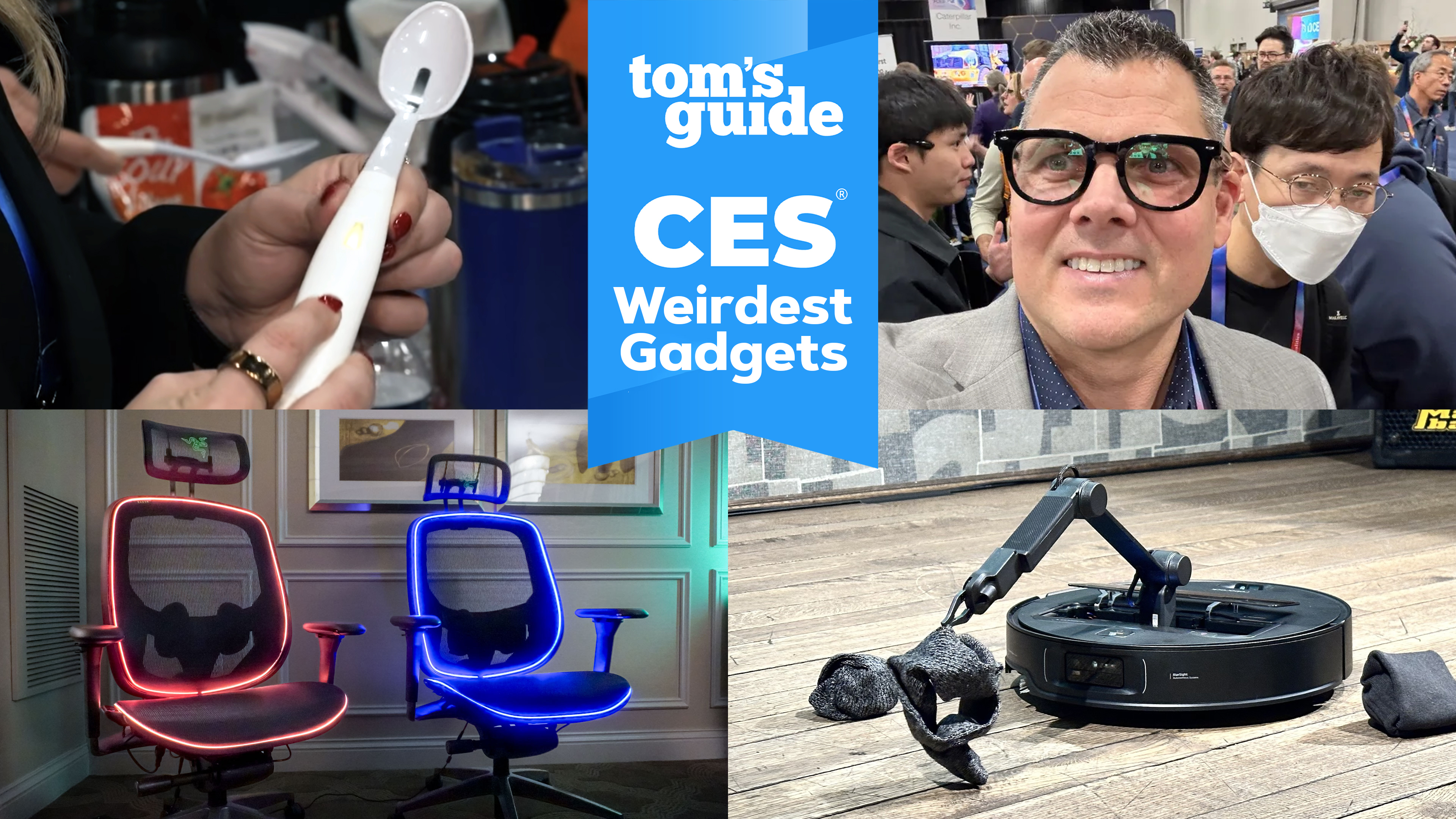
There’s no better way to start the new year off right by checking out the latest devices and gadgets at CES in Las Vegas. From new gaming handhelds like the Lenovo Legion Go S to the latest graphics cards from Nvidia’s RTX 50-Series and all sorts of smart home devices and of course, bigger, brighter TVs, CES 2025 has been a busy week for Tom’s Guide.
While we checked out some awesome new products you can buy right now or will release later this year, we also came across some that are one of our favorites parts of CES. While we’ve already given out our best of CES 2025 awards, it’s this weird and futuristic tech that has our imaginations running wild every year. Some of it might never make its way into an actual product while some of the weirdest gadgets do end up turning into actual products eventually
Here’s our list of the weirdest gadgets we saw at CES 2025.
Mudra Link Band
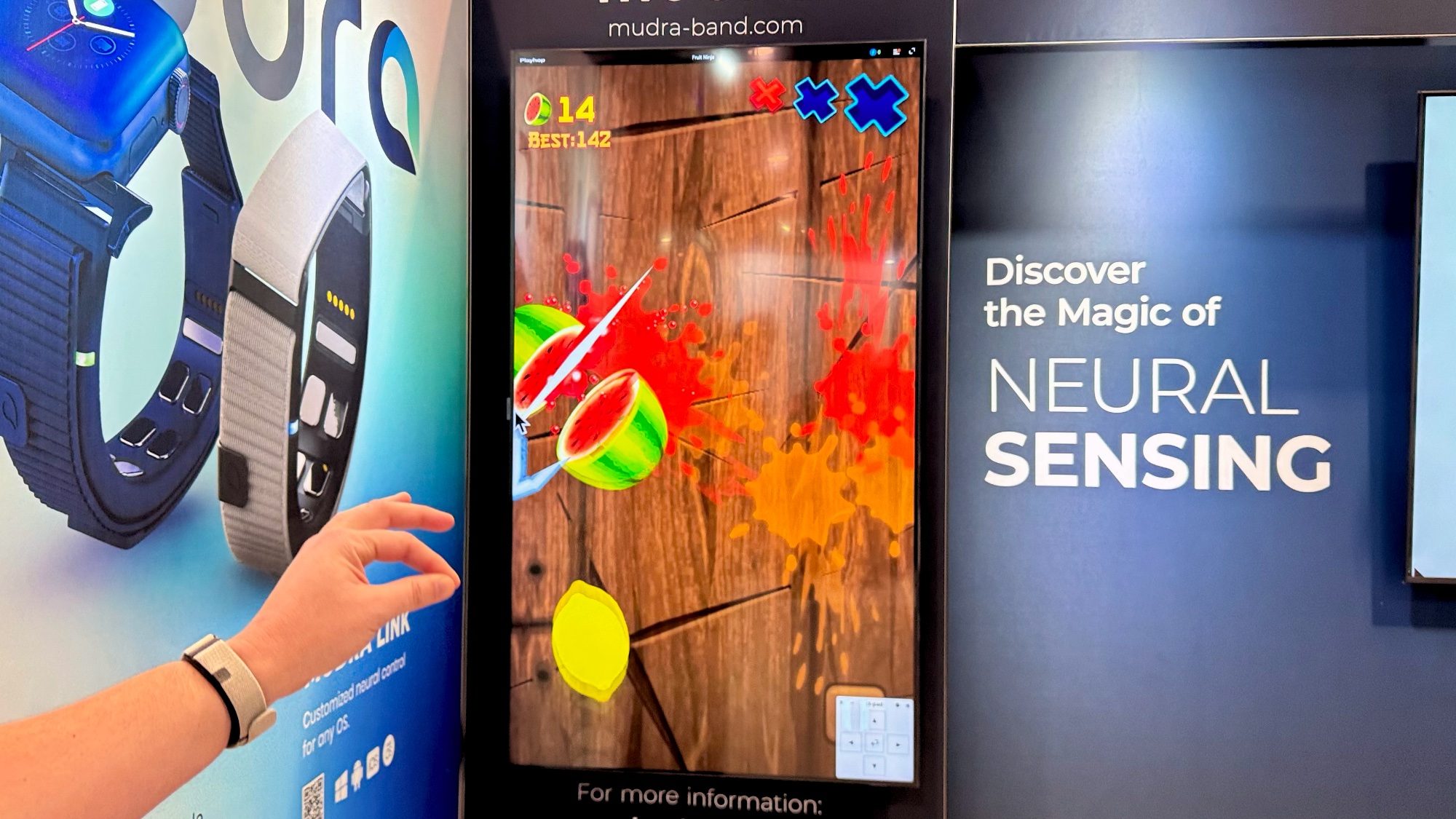
Wearables and keeping track of your health go hand in hand but what about for productivity? Well, the Mudra Link is a smart wristband that you can use to control your Android, macOS and Windows devices using your mind. Yes, you read that right. The first neural wristband lets you use Minority Report-style gestures to control your devices by reading your brain signals. And the best part, unlike the super expensive Apple Vision Pro, you’ll be able to pick up the Mudra Link for just $199.
The fun doesn’t stop there though as Wearable Devices, the company behind the Mudra Link, is partnering with TCL so that you can use its wristband as a remote for smart glasses. During our time testing out the device, we played a virtual violin, pulled a face like a rubber band in multiple directions by waving our hand in the air and doing a pinch gesture and even sliced through multiple fruits in Fruit Ninja. Hand and gesture controls have the potential to change how we interact with all our devices but it will certainly be strange seeing someone use the Mudra Link out in public for the first time.
Kirin Electric Salt Spoon
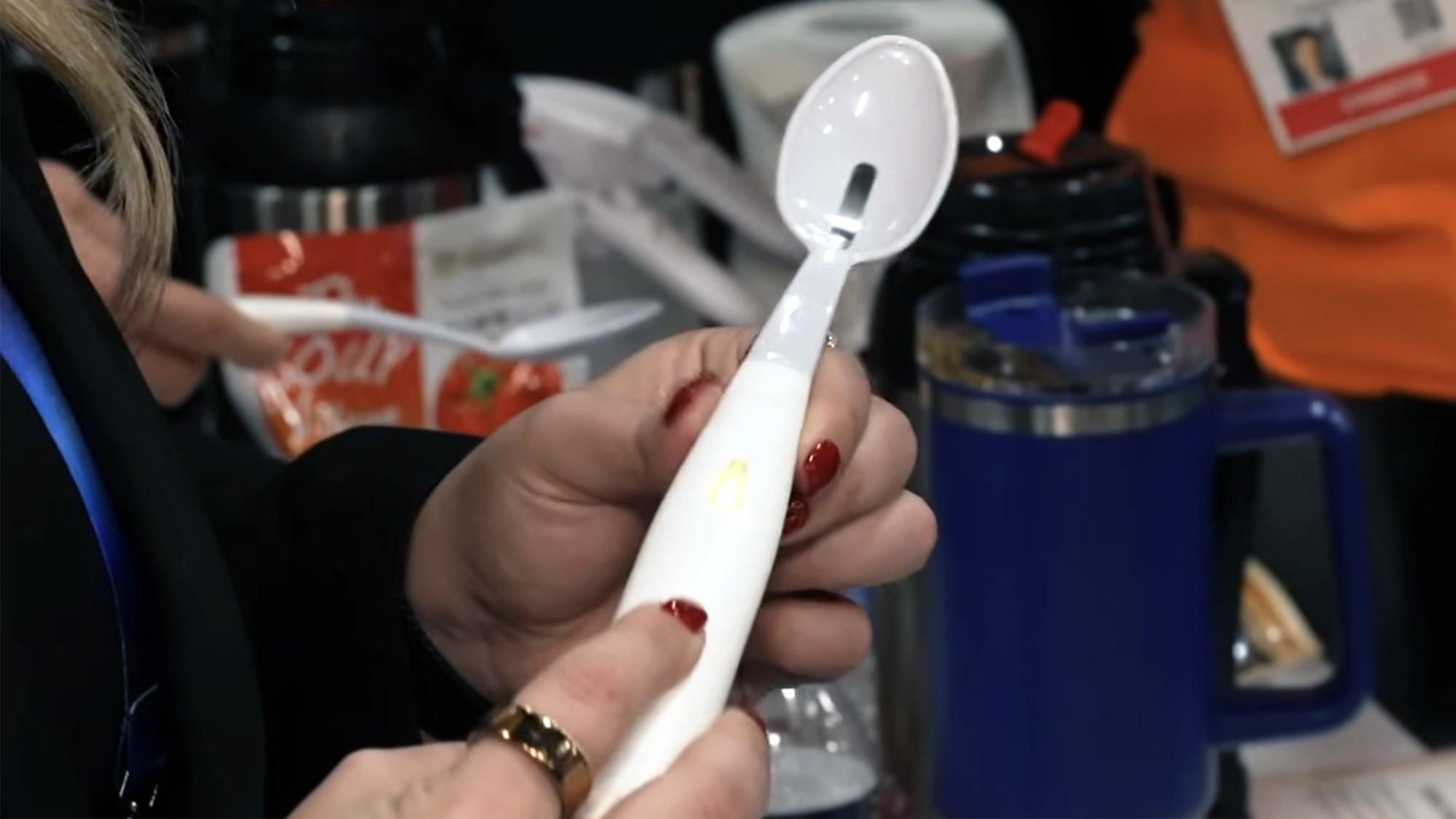
Do you love your food being extra salty? Or maybe your doctor wants you to cut back on sodium but it’s the one thing you just can’t give up. Well, the Japanese beer company Kirin has you covered with the electric spoon it brought to CES this year. Officially known as the Kirin Electric Salt Spoon, this one-of-a-kind gadget uses a weak electric shock to make your food taste saltier. The idea being that you can use less salt but still get that same taste you’re used to, at least if you’re using Kirin’s spoon.
Once turned on, the Electric Salt Spoon has four levels of “saltiness” or in this case, electric current strengths. When our own Kate Kozuch tried it with a bowl of miso soup, she said that at the end of her spoonful, she "noticed a faint tinging” that did in fact make the soup taste saltier. Unlike some of the other gadgets we see at CES each year, this one is available to purchase right now. However, you’ll need to travel to or buy it from Japan and this high-tech spoon will set you back $100.
Sign up to get the BEST of Tom's Guide direct to your inbox.
Get instant access to breaking news, the hottest reviews, great deals and helpful tips.
Lenovo ThinkBook Plus Gen 6
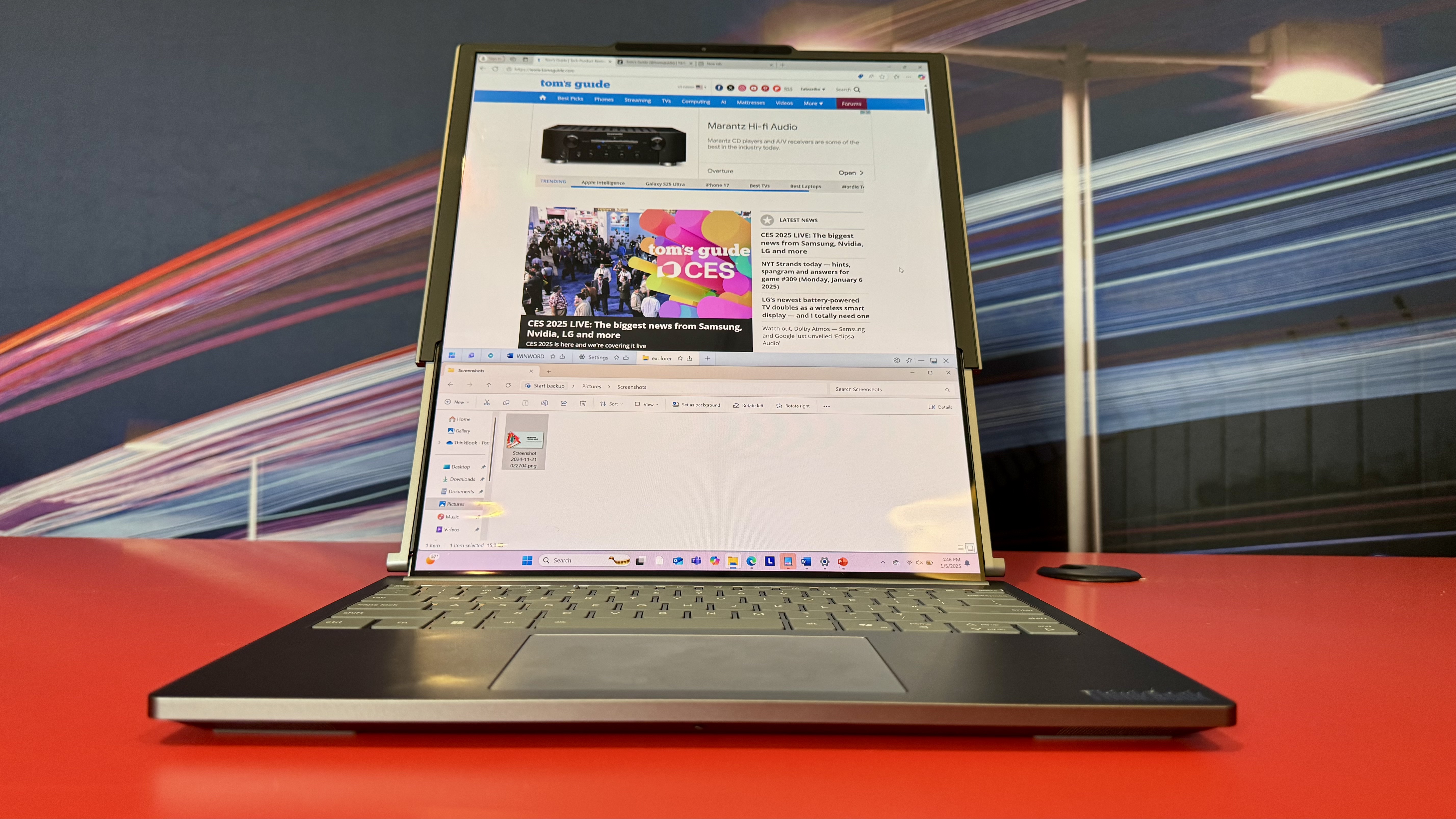
Rollable displays are nothing new but this year at CES, Lenovo showed off one in a laptop you’ll actually be able to buy. The ThinkBook Plus Gen 6 is the world’s first rollable laptop and with the push of a button or even a hand gesture, its 120Hz OLED display can grow from 15 inches to 16.7 inches. When fully extended, you can scroll through long pages or documents with ease but you can also have two apps right on top of each other.
The ThinkBook Plus Gen 6 was one of the most impressive gadgets we saw at CES this year but it’s also one of the weirdest. Imagine you were at a coffee shop and the person next to you’s laptop suddenly started growing. This rollable laptop will certainly turn heads but since it starts at $3,499, I wouldn’t expect to see too many of these out in public. Then again, the ThinkBook Plus Gen 6 could certainly come in handy for people who need that extra screen space but want to travel light and have the budget for it.
Xpeng Land Aircraft Carrier
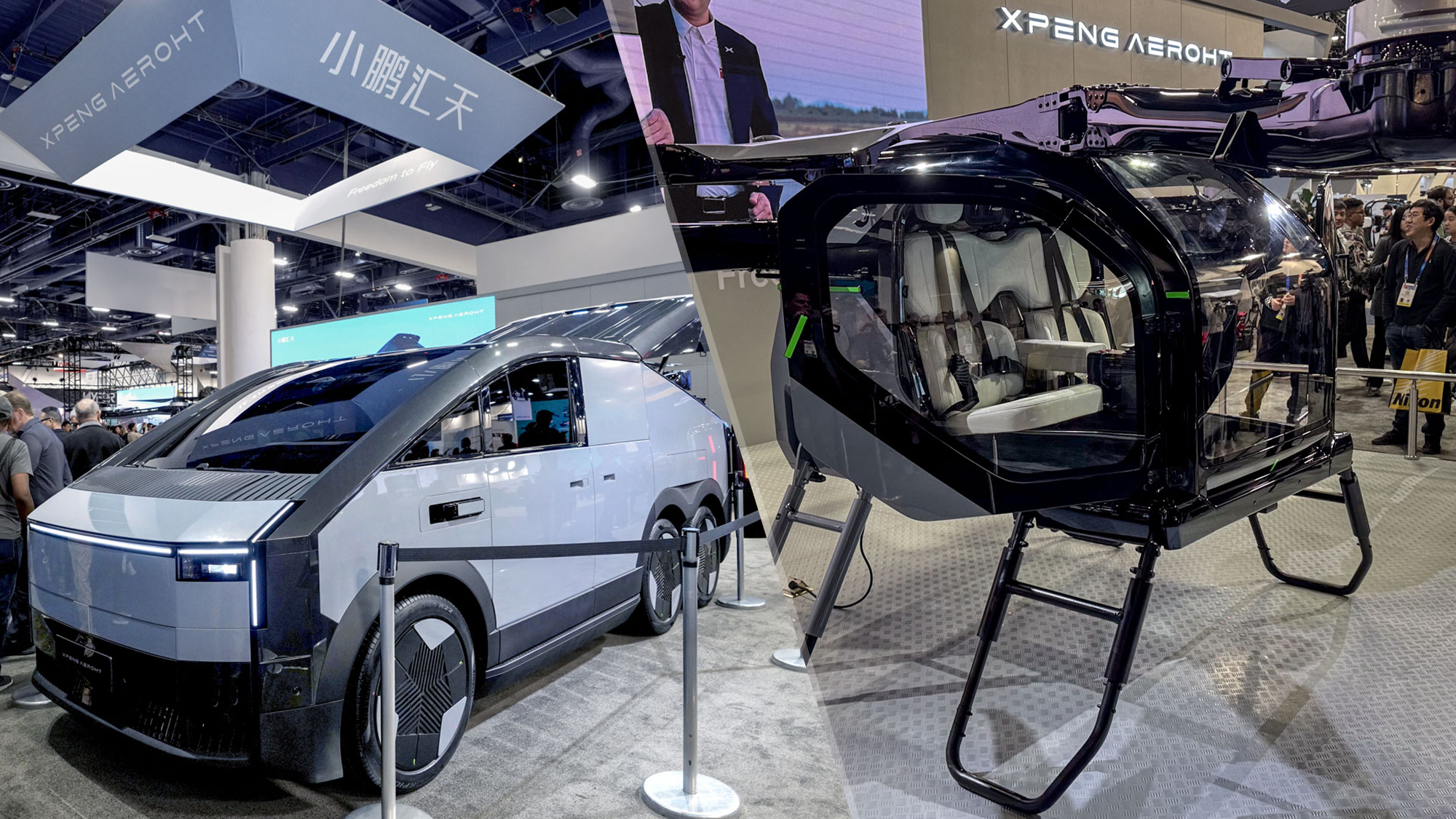
Unlike the eVTOL Flying Car we saw last year at CES, the Land Aircraft Carrier from Xpeng isn’t your typical flying car. Instead, it’s a gigantic electric SUV (think Cybertruck) that just so happens to have an eVTOL (electric vertical takeoff and landing) Air Module to go with it. Housed in the back of the vehicle, it folds out and from there, and you can take and fly for up to two hours on a charge.
The Air Module has a max speed of 90km/hour (~55 mph) and when its battery runs out, you just put it back inside the Land Aircraft Carrier, which has enough power on board to recharge the flying module six times. What’s probably the most exciting thing about this Transformer-like vehicle is that 3,000 intent orders have already come in and deliveries are expected to begin next year. In case you’re wondering, what will effectively be the first flying car you can actually buy sells for just under $300,000.
Halliday Smart Glasses
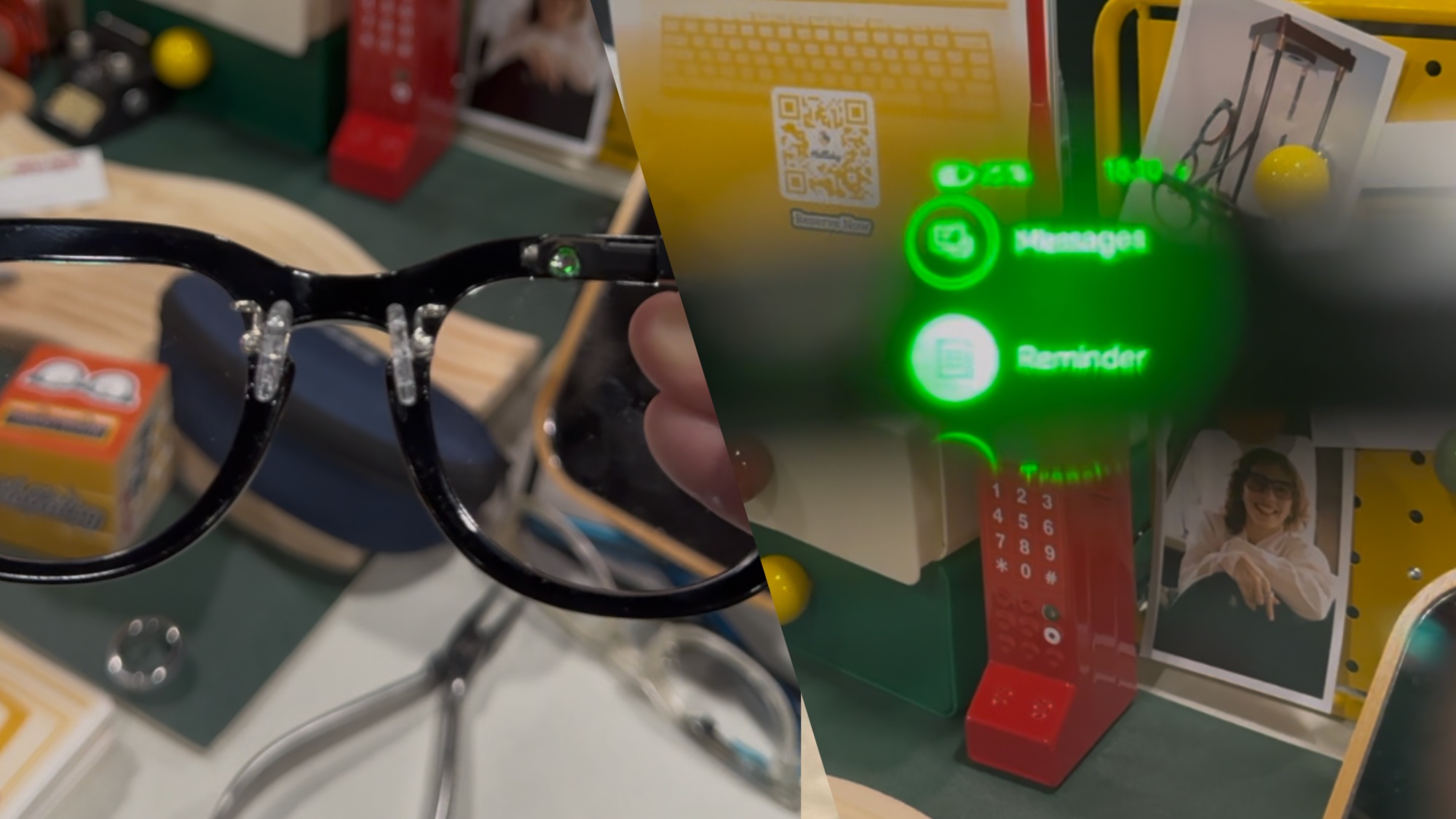
If you’re one of the few people that actually liked the idea of Google Glass but never got to try it, the Halliday Smart Glasses just might be for you. Instead of AR though, these smart glasses use a near-eye display module to show you all sorts of useful information on the fly. From translation to notifications with instant replies and even real-time navigation, the Halliday Smart Glasses offer a more practical approach to smart glasses that you’ll actually be able to buy.
Every gadget seems to have an AI aspect to it these days but the proactive AI on these smart glasses almost feels like cheating at life. You can even have their built-in AI analyze the conversation you’re currently having so that you can factcheck the person speaking to you. If one wearable wasn’t enough, Halliday is also making a smart ring that lets you interact with its glasses and their menus without having to touch the controls on the side of their frame. The Halliday Smart Glasses will cost $489 when they launch this year.
Tombot Jennie

There were plenty of robots everywhere we turned at CES this year and then there was Tombot’s Jennie. This robot dog stole our hearts immediately which makes sense as her behavior is based on that of a 12-week old labrador puppy and the company that created her had help from Jim Henson’s Creature Shop to do so.
Despite its cuteness, this robot dog isn’t meant to replace our real furry pals anytime soon. Instead, Jennie was designed to be the perfect emotional support companion for the elderly as they can’t take care of a live dog, not to mention the safety hazards of them doing so. Tombot’s robot dog responds to voice commands, knows where and how she’s being touched or petted and even wags her tail like a real dog. There’s also a companion app to tweak her settings as well as to give this robot dog its own unique name.
Base Case
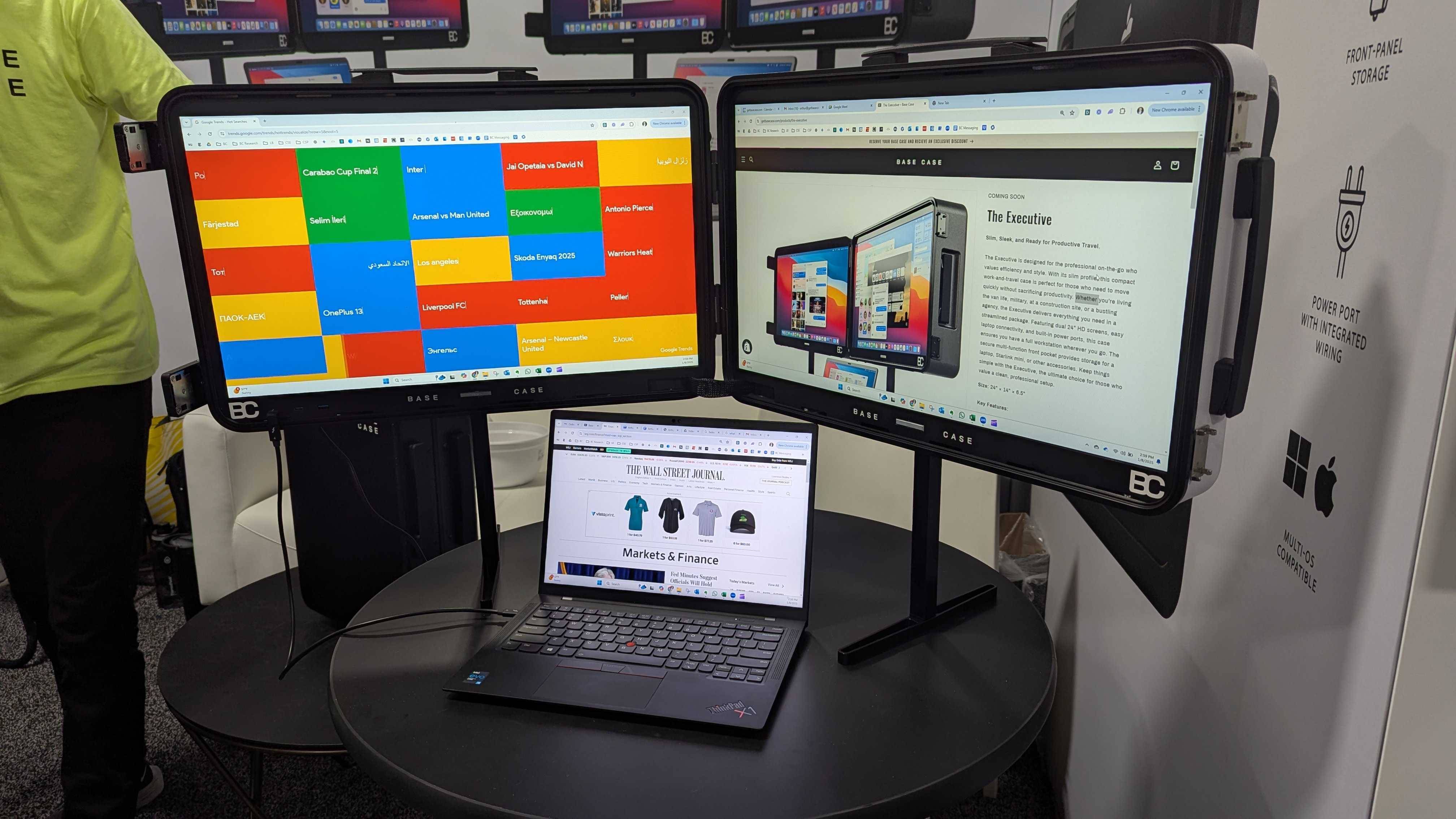
Imagine if your suitcase could suddenly transform into a multi-monitor workstation in seconds. That’s the idea behind the Base Case which we got to check out in person at CES this year. Available in black or white, when opened up, this suitcase contains dual 24-inch displays and extendable 10-inch legs so that you can use your laptop underneath them. The monitors themselves have a 75Hz refresh rate, offer up to 350 nits of brightness and the whole setup weighs just 20 pounds.
Base Case works with Windows and Mac with plenty of ports to connect your laptop including HDMI, DisplayPort, Thunderbolt 4, USB-C, Ethernet and even USB-A for your peripherals. In addition to the black and white versions we saw at CES, other color options are in the works too including yellow, pink and more. While pricing hasn’t been announced for Base Case yet, this mobile workstation on wheels likely won’t come cheap.
LiberLive C1
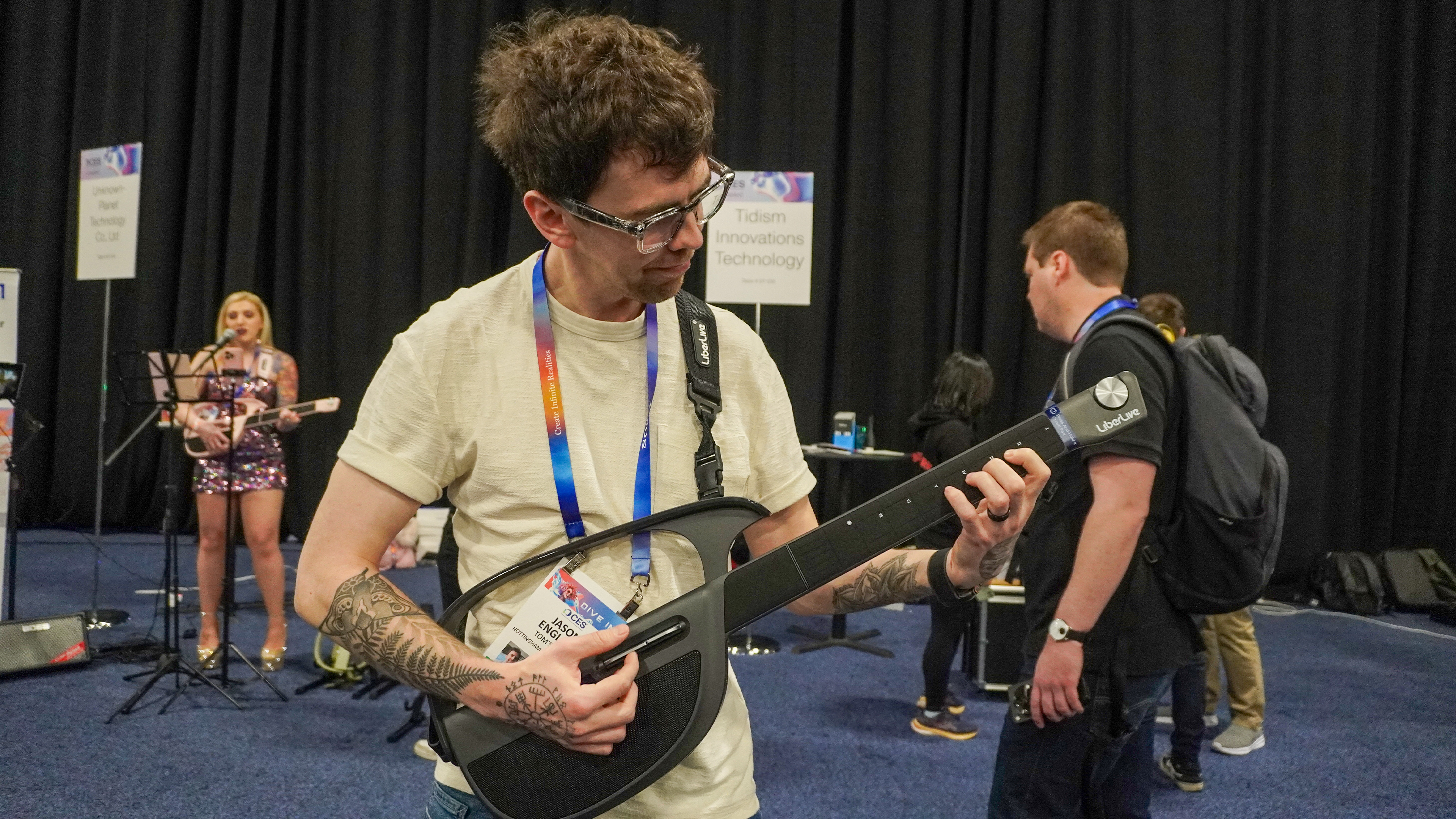
Have you ever wanted to pick up playing guitar or become your own one-man band? If so, the LiberLive C1 could certainly scratch that itch. This smart stringless guitar is also foldable and at just 3.9 pounds, you can bring it with you to practice anywhere you go. At CES, our own Jason England rocked out by playing Radiohead’s Creep to a small audience.
For people starting out with their first instrument, the C1 is a great educational tool to get you playing guitar with each fret button playing a chord and the LED indicators on the neck indicating tempo and key. But where it gets weird — in the best way possible — is when you take things up a notch and stop thinking about this as just a guitar, but a digital music instrument. The MicroDAW sampling synthesis technology and ability to layer multiple custom instruments gives you huge creative versatility. Plus the on-board speaker system has plenty of bass and audio clarity to turn you into a one-man band party!
Roborock Saros
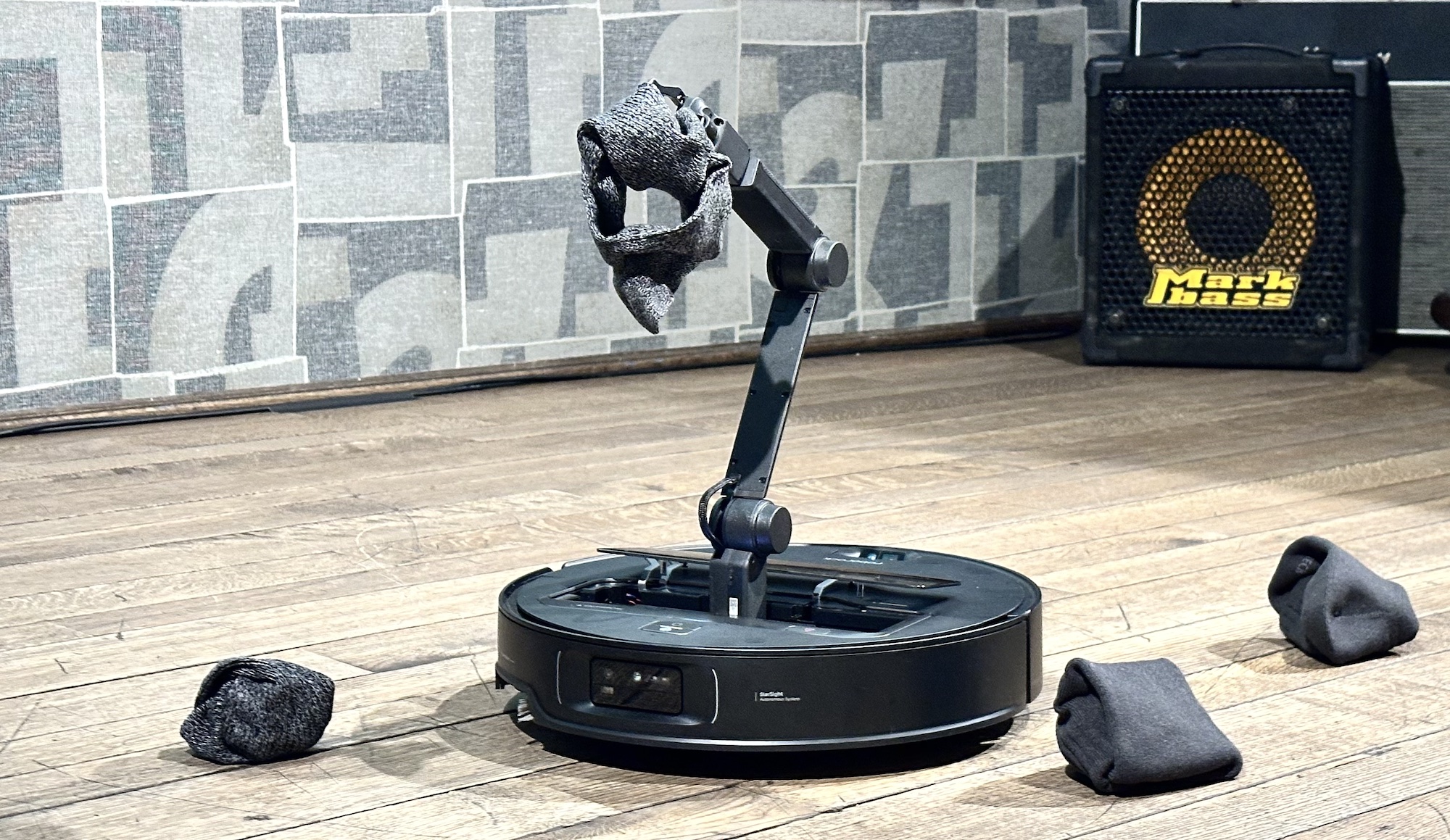
Do you ever wish your robot vacuum could stop and pick up small obstacles in its way? Then the Roborock Saros Z70 might be just what you’re looking for. Many robot vacuums now use AI to detect objects on the floor to avoid them, but this robot vacuum has a trick up its sleeve: an extendable arm with a claw at the end. This way, those socks lying on your floor won’t get in the way of having a clean house.
The Saros Z70 is the first of what will likely be a new breed of robot vacuums that are even more capable. However, there are some limitations to what its arm can pick up. With a maximum weight limit of 10.5 ounces (300 grams), it won’t be able to pick up most shoes but it will probably be able to move a pair of flip flops out of the way. Expected to launch later this year in late spring or early summer, pricing hasn’t been announced for the Saros Z70 yet but we wouldn’t be surprised if it costs north of $1,000.
Naqi Neural Earbuds
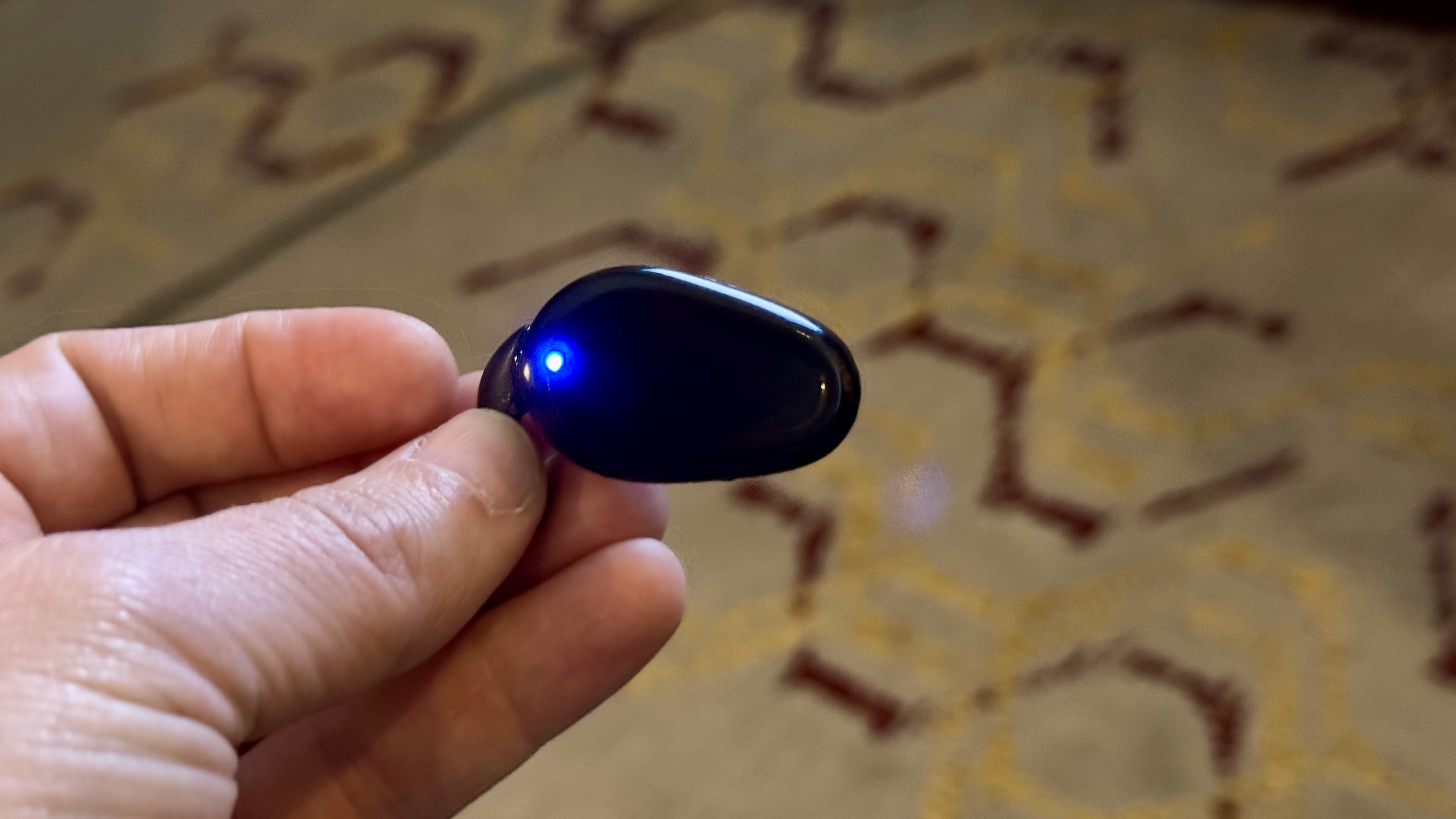
If a neural wristband isn’t your style, we also got to try a pair of brain-reading earbuds at CES. Unlike traditional earbuds though, the Naqi Neural Earbuds aren’t for playing music. Instead they translate brain waves and micro-gestures like clenching your jaw or quickly moving your eyes from side to side into actions. In the demo we tried, we were able to turn a smart light across the room on or off by clenching our teeth and even change its color with a quick sideways glance.
While we tried a wired pair of wired Naqi Neural Earbuds during our demo, the final version will be wireless. Likewise, Naqi Logix, the company behind them, also brought a new single earbud design we got to check out. While earbuds that let you control things using your mind might be a bit weird for most people, they do have a lot of potential in the accessibility space. Pricing for the Naqi Neural Earbuds or the single earbud version hasn’t been announced yet but if they work as promised, they could be worth it, even with a high price tag.
Razer Project Arielle
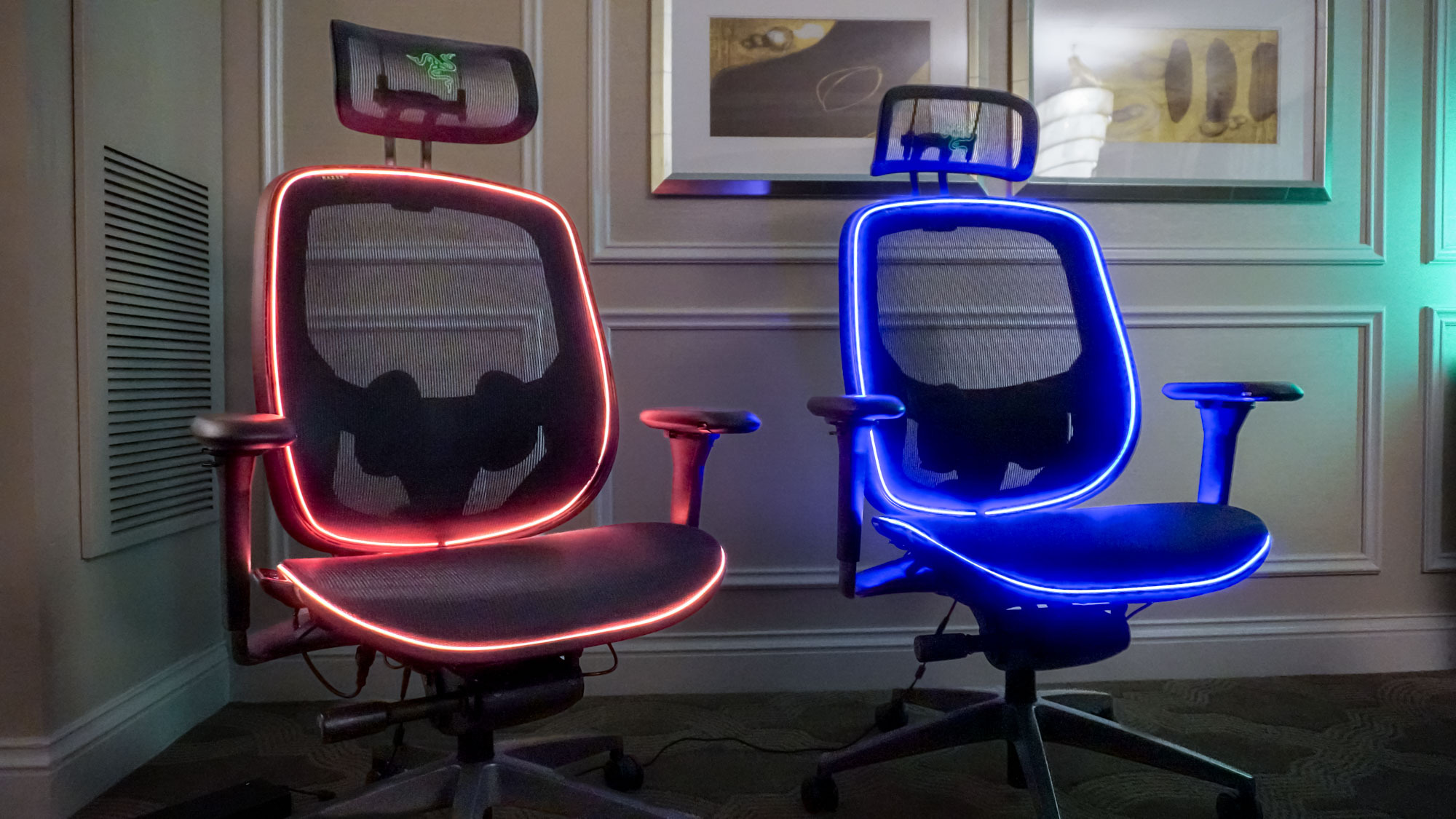
A gaming chair wrapped in RGB lights isn’t that strange I’ll admit but one with built-heating and cooling certainly is. That’s exactly what Razer showed off at CES this year with its latest concept chair, Project Arielle. Building on the design of the Razer Fujin Pro, this chair has an integrated bladeless fan on the back that warms up the air around you by 35.6°F (2°C) or cools it down by up to 86°F (30°C).
Since the chair Project Arielle is based on has an all-mesh design, the fan pushes out hot or cold air to keep you more comfortable while gaming. Both the temperature mode and fan speed are controlled by a touch-enabled controller on the side of the chair. Since this is a concept chair after all, it might never come to market. However, Razer’s haptic feedback pad for your gaming chair was shown off at last year’s CES and later became a real product, so there’s hope if you want a gaming chair that can heat you up or cool you off.
Samsung Stretchable MicroLED

Have you ever watched a horror movie so good that it felt like the monster was coming right out of the screen at you? With Samsung’s new Stretchable MicroLED display, it actually could. Even the small 6-inch screen version of this we saw at CES seriously impressed us but we’re not quite sure if there are that many practical uses for this new display tech.
In the demo we saw, a shark slowly swam towards us but when he got right up to the screen, it stretched out as if the deadly animal was coming through. To top this off, Samsung added a glass breaking animation with water spilling out at the very end to simulate a shark breaking through its enclosure at an aquarium. While you won’t find this tech in your new TV anytime soon, we could see it being popular at museums, amusement parks and other places where an interactive display could utilize it.
LG Vision AI Mobility Concept
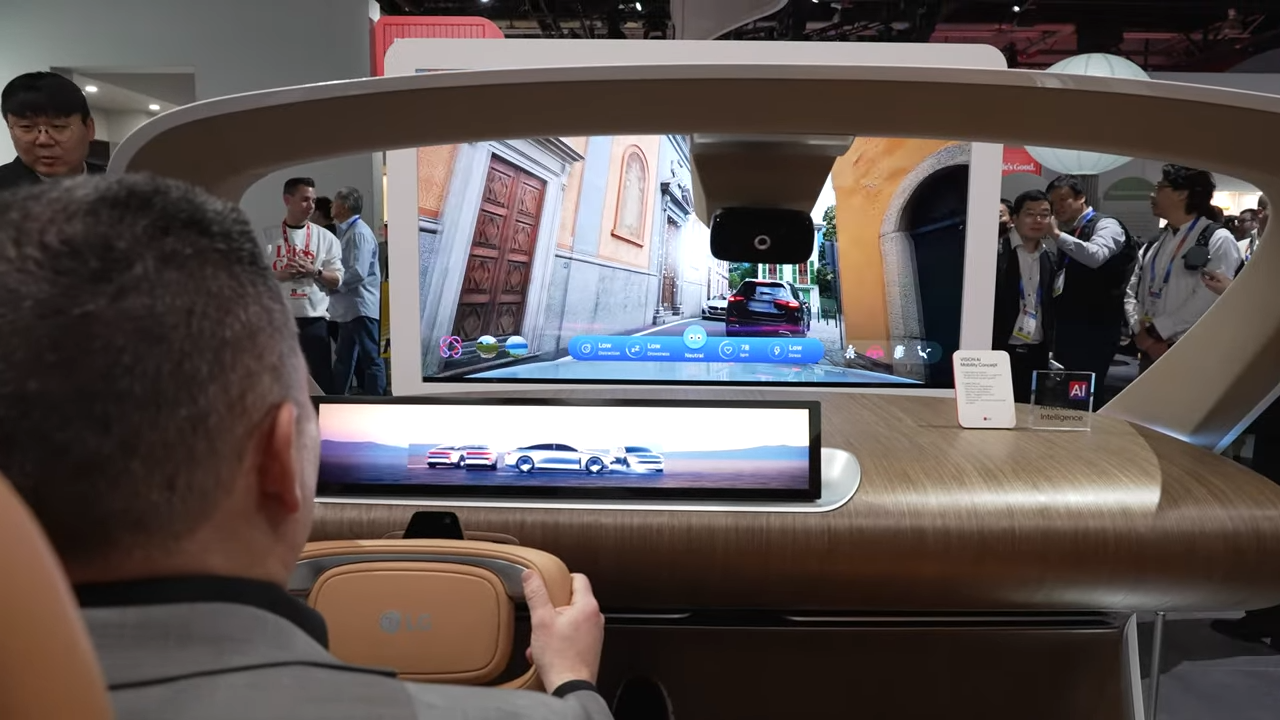
AI was in most of the products we saw at CES this year including this new concept car from LG. By using a combination of sensors, cameras and AI, the LG Vision AI Mobility Concept is able to keep tabs on your health and stress as well as provide you with a driving report that comes with a score. All of this cool or creepy tech is housed in a very high-tech looking yet not functional ride.
The demo we saw at LG’s booth had the car’s cockpit with a screen in front of it simulating a drive through the mountains with the ocean in the background. As we started driving, the steering wheel began tracking our heart rate to see if we were stressed while the cameras mapped our posture to tell if we were distracted. At the end of our ride, we got a driving report along with an AI report and a health report. Insurance companies would love for something like this to become a reality instead of just a concept.
More from Tom's Guide

Anthony Spadafora is the managing editor for security and home office furniture at Tom’s Guide where he covers everything from data breaches to password managers and the best way to cover your whole home or business with Wi-Fi. He also reviews standing desks, office chairs and other home office accessories with a penchant for building desk setups. Before joining the team, Anthony wrote for ITProPortal while living in Korea and later for TechRadar Pro after moving back to the US. Based in Houston, Texas, when he’s not writing Anthony can be found tinkering with PCs and game consoles, managing cables and upgrading his smart home.
